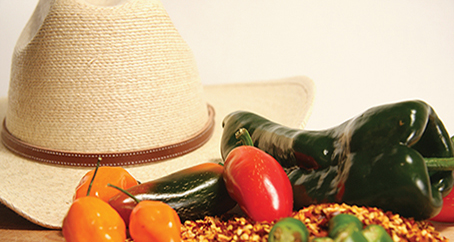Welcome to Blue Book!
Are you ready to join the thousands of companies who rely on Blue Book to drive smarter decisions? View our plans and get started today!
Still have questions? We’d love to show you what Blue Book can do for you. Drop us a line– we’ve been waiting for you.

Even the Shed contends with weather. Vanhoozier says last year, because it rained every day in May, local growers had little to deliver to the farmers’ market. “I was just out visiting some farms, and if the weather works out, they’re excited to bring produce to the Shed this year.”
Like Mexico last year, Florida had a recent spate of rain and cold that affected a slew of crops including cucumbers, oranges, peppers, squash, and zucchini—which has, in turn, affected price. “It’s been a strange year with El Nino,” says Marc Nelson, vice president at distributor and broker Prime Produce, Inc., noting the weather’s impact on Mexican, East Coast, and Chilean supply. “When the rains hit Mexico, the prices were expected to spike into Thanksgiving and then settle down, but they haven’t because there wasn’t any other supply. Everything has been tight, high-priced, and not as high in quality.”
Stachurski says business at Hardies is doing well and growing, but overall the produce market is in peril. “We’ve had significantly escalated costs for sustained periods of time,” he explains. “In the past, you would have a high market for a week or two, but these markets are holding high. For example, we brought in strawberries for Valentine’s Day. Last year, they were $16 to $20 per flat, but this year, the f.o.b. [free-on-board] price was over $30 per flat. Sometimes it can get to the point where a commodity is so expensive, people choose other things and that can prohibit sales.”
While Stachurski believes the greatest contributor to the year’s volatility was weather, there are other factors. First and foremost, he notes, “Mother Nature is in charge”—but labor shortages and transportation issues added to the mix. “Even a one-day closure at the Mexican border interrupts supply plans.” And if there’s inclement weather on the East Coast or in the Midwest, “that makes things challenging.”
Freight costs are also affecting price, with fuel as just one part of the equation. “Certainly, the lower fuel cost is favorable and welcome, but there’s still a trend toward higher freight costs, primarily based on supply and demand. We have a significant number of truckers at retirement age and the industry doesn’t have a pipeline filled with younger drivers. The regulations around hours of service and logging have changed delivery times, which impacts the supply chain. Overall, the drop in fuel gives the perception that rates will go down, but in the big picture I think they’re steady, if not up.”
The Local Angle
The buy-local trend is alive and well in the Dallas-Ft. Worth area for seasonal suppliers—but of course, it depends on the weather. “Growers in Texas have a short window, maybe from April to July, and then everything gets burned up in late summer,” Yarborough explains. “I pull yellow squash and zucchini locally, as well as turnips and green onions. Most customers would prefer local, but if the price gets too high, they’re quick to jump ship for a cheaper source.”
“In my opinion, there’s not much of a local trend, but that depends on who you ask,” comments Douglas. “A lot of grocery stores have signs that say ‘local,’ but then you look at the sticker and it’s from California. To me, produce grown within 50 or 100 miles is local. Some of the restaurants, too, especially the upper crust ones, promote local produce. But if it’s January, you know they’re not serving local items.”
“As far as the trends, there are moving parts and it changes all the time,” contends Steve Ford, managing member at Dallas Direct Distributing, LLC. “One day it’s organic, the next day it’s packaged stuff, and it seems like people want to support locally grown produce. But even that is a moving target in terms of commodities.”
Ling Taylor, president of Pacific Plus International, Inc., agrees. “We’re not always sure what will be grown or available locally anymore,” she says. “Sometimes oranges, sometimes yellow onions or tomatoes. But it’s not consistent enough or with enough volume, and we really need year-round sources.”




